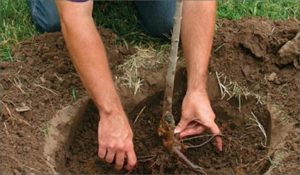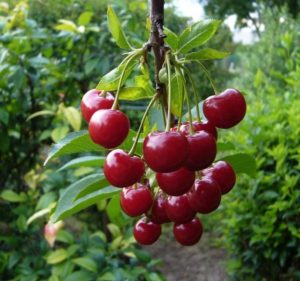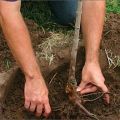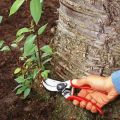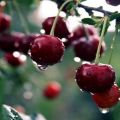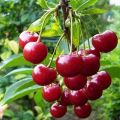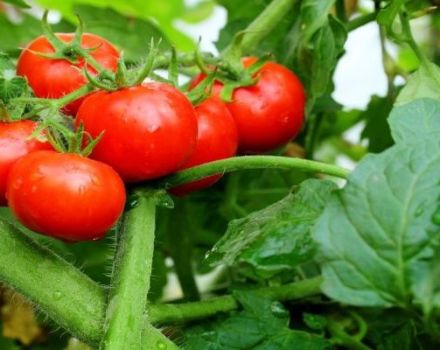Description of the cherry variety Griot Moskovsky and the characteristics of the yield, planting and care
Lovers of fruits and dishes that can be prepared from them often plant various varieties of cherries in their garden. Griot Moskovsky cherry variety is popular among gardeners. Before planting such cherry trees on the site, you should familiarize yourself with their features and the basic rules for growing in the garden.
Description and characteristics
The description of the variety will help to study in more detail the main distinctive features of the plant and therefore it is better to familiarize yourself with it in advance. The history of the plant begins in the distant 50s of the last century, when biologist Khasan Yenikeev decided to create a new cherry variety that would be resistant to temperature changes and high yields. The scientist managed to achieve his goals and create a new variety of bush cherry in 1959. At first, the plant was planted only in the Moscow region, since there are optimal climatic conditions for growing cherries. However, over time, trees began to be planted in other regions.
Cherry variety Griot Moskovsky is classified as a medium-sized plant, since adult trees grow up to three meters in height. In the process of growing on plants, a large crown appears, which looks like a ball.
The shoots of plants are thin, with a pronounced drooping. The leaves on the branches are distinguished by an oblong shape and a smooth surface, painted green.
A distinctive feature of Griot of Moscow is considered ripe cherries, the weight of which reaches 3-4 grams. When grown in a greenhouse, the weight of each ripe fruit can be more than 5 grams. All cherries are almost perfectly round. The skin of the fruit is darkish red. Also, on its surface, you can see small subcutaneous dots, which are often found in the Memory of Babylon variety. Juicy and aromatic pulp is located under the skin of the fruit, which makes cherries very sweet and tasty.
The planted trees of Griot of Moscow will grow for 15-20 years, after which they begin to fade. The first fruit formation begins 5-6 years after planting seedlings in the garden. If you do the cultivation of cherries correctly, you will be able to collect about 20 kg of fruit from one tree. However, it is quite difficult to achieve such a yield, and therefore most gardeners collect no more than 10 kg of fruits from a plant.
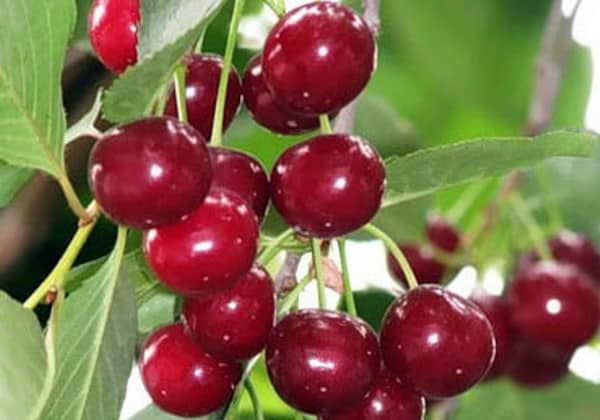
The variety was created for cultivation in regions with a temperate climate, and therefore experienced gardeners advise to plant it only in central regions where there is no hot summer.Only in such conditions will it be possible to achieve maximum yield.
Advantages and disadvantages
None of the varieties of cherries can be called ideal, as all plants have their own advantages and disadvantages. The main advantages of Griot of Moscow include:
- high yield even when grown in not the most favorable climatic conditions;
- tolerance to temperature changes and night frosts;
- the taste of ripe cherries;
- fast ripening of fruits;
- resistance to most diseases.
There are not so many disadvantages of the plant, but they are still present.
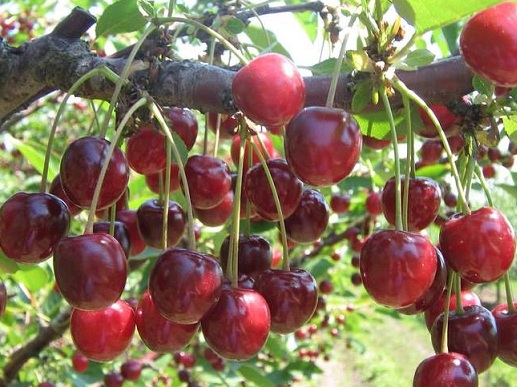
The main disadvantages include the following:
- the harvested crop is poorly stored in winter and quickly deteriorates due to the excessive juiciness of ripe cherries;
- plants are often infected with coccomycosis, which can lead to the death of trees.
Planting and care rules
It is recommended that you familiarize yourself with the rules for planting and caring for planted trees in advance.
Planting
Planting most seedlings begins with choosing the most suitable spot in the garden. Experienced gardeners recommend planting cherries on an area that is illuminated by the sun throughout the day. Trees should not be grown in shaded areas, as this negatively affects yield. Also, do not plant cherries in gardens with elevated water tables. Due to the high moisture content of the soil, planted trees may die.

Having chosen a suitable place, they start planting seedlings. First, a planting pit is made, in which the cherry will be planted. To do this, a pit is dug in the ground with a depth of about 40-50 cm, to which organic fertilizing is added. Then a seedling is carefully placed in it, everything is covered with soil and watered with water.
Care
To increase the yield, you must constantly take care of the planted cherries. During the care, you will have to periodically water the trees so that they have enough moisture. It is enough to moisten the soil 1-2 times a month.
It is not worth watering the plant more often, as due to the high moisture content of the soil, rotting of the root system may begin.
In addition to watering, they are engaged in fertilizing to saturate the soil with nutrients. For the first time, fertilizers are added to the soil 2-3 years after the cherry is planted. In the spring, nitrogen is added to the earth, organic matter is introduced in the summer, and phosphorus and potassium dressings in the fall.

Protection against diseases and pests
Griot of Moscow almost never becomes infected with scab, but other diseases can harm the plant. Cherry often becomes infected with moniliosis and coccomycosis. Due to these fungal pathologies, large brown spots form on the surface of the leaves, and a pink coating appears on the inside. If the cherries are not treated, the leaves will begin to crumble gradually, which will lead to the death of the tree.
For the treatment of plants, you should use a solution of copper sulfate. Also, in the fight against fungal diseases, Bordeaux liquid is used, with the help of which pathogens of pathologies are eliminated. To protect trees from diseases and pests, they should be treated with fungicides in the summer. It is enough to spray the plants twice a season.

Preparing for winter
Some gardeners are sure that frost-resistant varieties of cherries do not need preliminary preparation for winter, but this is not the case.
In the second half of autumn, the following preparatory work is necessarily carried out:
- tree trunks are treated with lime liquid;
- at the end of November, all cherries are watered abundantly to saturate the soil with moisture;
- all dry fruits and leaves are removed from the trees;
- the soil near the plants is cleared of fallen leaves;
- the site is dug up and fed with mineral and organic fertilizers.
If the trees are not prepared for winter in advance, the yield can deteriorate significantly.
Conclusion
Some gardeners prefer to grow the frost-resistant Moscow Griot cherry.Before you start planting this variety, you must definitely familiarize yourself with its description and cultivation features.
